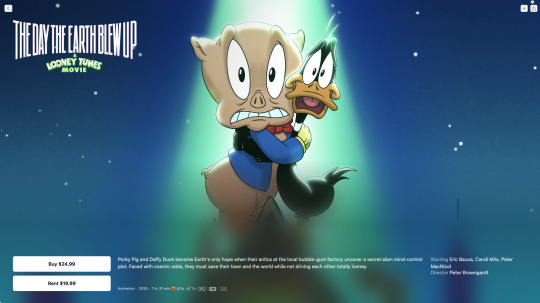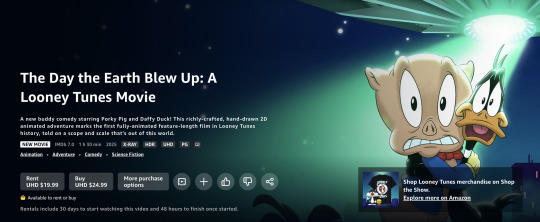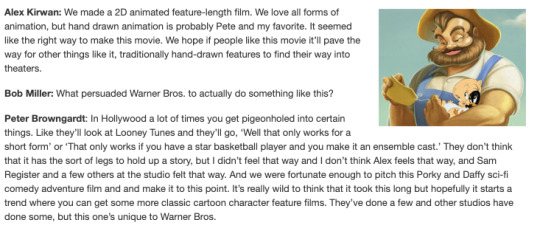Text
twitch_live
Zoh Shiat | MHWilds No Smithing Run
It's the final fight of our Monster Hunter Wilds challenge run! How many attempts will it take? Let's find out!
We're doing a challenge run! Rules: No equipment from the smithy, buying items, using collected items, supply items, or quest rewards.
3 notes
·
View notes
Text

















Ohh, so I was looking at my storage and found these! I originally shared them on twitter before yeeting the platform. Anyway, feel free to use! Art memes for your oc :D
68K notes
·
View notes
Text
Reblog if you want your followers to tell you which fictional character you remind them of.
430K notes
·
View notes
Text
hot artists don't gatekeep
I've been resource gathering for YEARS so now I am going to share my dragons hoard
Floorplanner. Design and furnish a house for you to use for having a consistent background in your comic or anything! Free, you need an account, easy to use, and you can save multiple houses.
Comparing Heights. Input the heights of characters to see what the different is between them. Great for keeping consistency. Free.
Magma. Draw online with friends in real time. Great for practice or hanging out. Free, paid plan available, account preferred.
Smithsonian Open Access. Loads of free images. Free.
SketchDaily. Lots of pose references, massive library, is set on a timer so you can practice quick figure drawing. Free.
SculptGL. A sculpting tool which I am yet to master, but you should be able to make whatever 3d object you like with it. free.
Pexels. Free stock images. And the search engine is actually pretty good at pulling up what you want.
Figurosity. Great pose references, diverse body types, lots of "how to draw" videos directly on the site, the models are 3d and you can rotate the angle, but you can't make custom poses or edit body proportions. Free, account option, paid plans available.
Line of Action. More drawing references, this one also has a focus on expressions, hands/feet, animals, landscapes. Free.
Animal Photo. You pose a 3d skull model and select an animal species, and they give you a bunch of photo references for that animal at that angle. Super handy. Free.
Height Weight Chart. You ever see an OC listed as having a certain weight but then they look Wildly different than the number suggests? Well here's a site to avoid that! It shows real people at different weights and heights to give you a better idea of what these abstract numbers all look like. Free to use.
327K notes
·
View notes
Text
Please watch The Day The Earth Blew Up, save Looney Tines & Animation is cinema

53 notes
·
View notes
Text
🎉🎉🎉THE DAY THE EARTH BLEW UP IS NOW AVAILABLE FOR DIGITAL PURCHASE!!!🎉🎉🎉



if you missed out on the theatrical window but still want to support this film (and here's a little reminder as to why you should), CONGRATS!!! the time is nigh!! it's available for purchase on Fandago at Home, Apple TV or Amazon Prime!
4K notes
·
View notes
Text

Almost there, almost there!
Go watch and see The day the earth blew up: a looney tunes movie!
Minecraft fans please help us!
344 notes
·
View notes
Text

We’re not done just yet!
Go see The day the earth blew up: A looney tunes movie!
144 notes
·
View notes
Text
Reblog if you've found friendship because of your fandoms.
204K notes
·
View notes
Text

"Talent is something you make bloom, instinct is something you're born with." – Mamoru Takamura
91 notes
·
View notes
Text
it's seriously so.. Something that i've had multiple people tell me that my posts are the first they're hearing about The Day the Earth Blew Up.. WHICH IS WHY I'M BEING AN OBNOXIOUS SHILL!!! some theaters have early releases as soon as TODAY (!!!!!!!!!!!!!!!) so please please be sure to check your local theaters and listings!! take a friend! take your family! in doing so you not only spread the message that people want to see more traditionally animated films, you not only convince WB you don't want to see movies that are glorified shoe commercials, you not only convince WB that they are dead wrong for attempting to write this off for tax purposes, but you get a pretty dang good film out of it, too! let director Pete Browngardt and supervising producer Alex Kirwan tell you the same 👇

personally, as someone who works in animation, i'm very against the messaging of "IF YOU DON'T WATCH THIS YOU ARE SINGLEHANDEDLY RESPONSIBLE FOR ANY FAILURE THAT COMES. YOU ARE MURDERING THE ANIMATORS". i find it condescending and unprofessional, and it only alienates your audience further. nobody should be forced to watch something they dont want to. especially when most (if not all) of these problems come strictly from above.
HOWEVER: you have absolutely nothing to lose by watching this.
you can feel good about supporting a film that almost didn't make it and helping to contribute to spreading a message that we want more films like this. you get to bask in the satisfaction of proving the higher ups wrong, that we DO want movies like this, we DO want traditional animation, we DO want to support the artists. but the best thing of all is that you get to enjoy a traditionally animated film on the big screen again
knowledge or investment of the characters and series is genuinely, in my eyes, irrelevant. i sincerely think it has elements that can be appreciated by anyone--even if, again, it just comes down to the satisfaction of doing a good turn and showing your support for animation. there is absolutely nothing you can lose by supporting it, but so, so much you, these workers, and the medium of animation as a whole can gain. if you have a spare hour and a half within the next few weeks, get out of the house, grab a friend, grab your siblings, grab your significant other, or just grab your own company and chill out with a gorgeous and funny and heartwarming and history defying movie. it's no small miracle that something like this exists in the current climate of the animation industry. don't you want to say you could play a hand in experiencing that miracle?
560 notes
·
View notes
Text


Daily reminder/update on The day the earth blew up: a looney tunes movie!
Go see it now!!!

94 notes
·
View notes
Text
Whet your appetite and sharpen your weapons… Behold a sumptuous Monster Hunter Wilds meal recreated irl 🍖
568 notes
·
View notes
Text
The Many Faces of Daffy Duck
Daffy Duck is arguably one of the most versatile cartoon characters ever created. He has played a myriad of roles over the course of his long career and shown many distinct personality traits. Each director that has worked on Daffy has brought something to the character and has helped define and develop him. The transition Daffy has made over the years has been startling and quite hilarious. From his humble beginnings as an uncontrollable screwball to the greedy egomaniac we all know and love, Daffy Duck has shown more range than most of today’s live-action actors.
It all began in 1937 with Tex Avery’s cartoon "Porky’s Duck Hunt." At this point in time, Porky Pig was, surprisingly enough, the most popular Looney Tunes character and its main star. This cartoon begins much like any other Porky cartoon, but takes a definitively wacky turn that would change the course of animation forever. The first appearance of the as yet unnamed Daffy introduced a new kind of cartoon character: the screwball. Daffy was unlike anything audiences had seen before. He was manic and uncontrollable, insane for no discernable reason. He defiantly stood up to the gun-toting Porky and bounced and laughed his way all over the place, including the end titles. His frantic energy and loony personality were just what cartoons needed.
Daffy, the "crazy, darn fool duck," continued to be an unbridled ball of hilarious lunacy throughout his early pictures in the 1930s and '40s. He received his name in his second appearance, Tex Avery’s 1938 picture "Daffy and Egghead" — which also featured the man who would be Elmer Fudd. However, it was director Bob Clampett, not Avery, who truly developed Daffy’s madcap character. Clampett’s Daffy was a bit taller and leaner than the original squat and pudgy design used by Avery. Clampett’s Daffy was a gleefully wild screwball, who was content to "Woo-hoo" his way throughout life, an almost ever-present thorn in the side of Porky Pig. In fact, Daffy’s popularity began to eclipse Porky’s. Based on 1940’s "You Ought To Be in Pictures" by director Friz Freleng, one might imagine this is exactly what the crafty duck had in mind from the start. Here, Daffy tries to trick Porky into leaving cartoons for live-action features so that he can become the new star of Looney Tunes. While Daffy’s efforts on-screen are not so successful — Porky returns and soundly thrashes the duck — in real life audiences could not get enough of Daffy, and he soon became Warner’s new king of the cartoon hill.
Clampett and the other animators would continue to develop Daffy’s personality and visual design throughout the 1940s. Most notably was the work of Robert McKimson. McKimson made Daffy a little bit leaner, a little less crazy, and a bit wittier. The once great Porky Pig now found himself reduced to being the straight man for Daffy’s wacky antics. Daffy also found himself involved in World War II, much to his chagrin, as evidenced in the 1945 short "Draftee Daffy," where he is constantly evading the "little man from the draft board."
The Daffy of the 1940s was a good-natured goofball who was zany but a little more in control. And just as "You Ought To Be in Pictures" foreshadowed the duck’s rise to stardom, so did "The Great Piggy Bank Robbery" give a glimpse of the next stage in the duck’s evolution. This 1946 gem by Bob Clampett features Daffy as gumshoe Duck Twacy, hot on the trail of a piggy bank thief. This parody of comic strip detective Dick Tracy is complete with a ludicrous rogues gallery featuring such oddballs as Rubber Head and Neon Noodle. Daffy was still a crazy darn fool duck but showed that he could do more than just comedy.
The next director to leave his mark on Daffy was the great Chuck Jones. Jones, I feel, contributed the most to Daffy’s evolution. While he still displayed occasional fits of lunacy, Jones’ Daffy was much more defined by his large ego, his lust for fame & fortune, his greediness, and his uninhibited jealousy of Bugs Bunny. Jones also altered the duck’s design yet again, and it is his taller, lankier and scruffier Daffy that is most recognized today.
The first contribution that Jones made to Daffy’s character was a continuation of what Clampett began in "The Great Piggy Bank Robbery." This is what I like to refer to as Daffy as the hapless adventurer. The 1950 film "The Scarlet Pumpernickel" was the first of many Jones cartoons placing Daffy in the role of an adventure hero parodying popular movies and literature. Harkening back to "You Ought To Be in Pictures," this cartoon features Daffy pitching his masterpiece script to the head of Warner Brothers and proclaiming that he is tired of being typecast in comedy and wants to try his hand as a dramatic leading man. What follows is an all-star Looney Tunes extravaganza that sets up the formula for following cartoons: Daffy relentlessly tries to be a dramatic leading man & hero and proceeds to fail miserably at both. Try as he might, he can’t shake his comedy roots, and time and time again winds up with the short end of the stick.
Daffy’s wacky adventures continued in such classic Jones shorts as the western farce "Dripalong Daffy" in 1951, the sci-fi spoof "Duck Dodgers in the 24th and a ½ Century" in 1953, and "Robin Hood Daffy" in 1958. Not so surprisingly, and in a brilliant bit of revenge, Porky Pig is often featured in these stories as Daffy’s sidekick who ends up overshadowing his mentor and saving the day. While Daffy’s ego and bad luck get the best of him, it’s Porky who is competent and resourceful. Porky defeats the outlaw in "Dripalong Duffy," outwits Marvin the Martian in "Duck Dodgers," and subdues the Shropshire Slasher in the Sherlock Holmes parody "Deduce, You Say." An almost fitting turn of events given what Daffy had put him through over the years.
The final stage of Daffy’s development was as the spotlight craving, greedy, upstaging, egomaniacal foil to Bugs Bunny. Indeed, the pairing of Warner’s two biggest stars was a stroke of pure genius. For just as Daffy had eclipsed Porky in popularity, so had Bugs overtaken Daffy. Daffy was none too happy about it and was determined to get the spotlight back.
The Bugs-Daffy dynamic began with Chuck Jones’ 1951 masterpiece "Rabbit Fire," where the two toons square off against each other in a continued effort to convince Elmer Fudd that the other is the animal currently "in season." Daffy proves to be no match for the superior wit of Bugs and is perpetually on the receiving end of Elmer Fudd’s gun. The debate over whether it was Duck Season or Rabbit Season would continue in "Rabbit Seasoning" in 1952 and "Duck! Rabbit! Duck!" in 1953, the latter were it is ultimately revealed to be Baseball Season!
The Bugs and Daffy rivalry does not stop there, not by a long shot. The animators realized they had a successful formula on their hands and continued to pair the rabbit and the duck in many more films throughout the 1950s and early '60s. Two shorts in particular stand out. The first is the definitive Daffy Duck cartoon and one of the finest animated films ever made. The second is the best example of the Bugs-Daffy one-upping each other relationship, which was surprisingly directed not by Jones but by Friz Freleng.
The first cartoon is the 1953 classic "Duck Amuck" where Daffy is continually plagued by an unseen animator who rearranges the duck’s world and appearance and effortlessly torments our star into a frenetic rage. The animator is finally revealed to be none other than Bugs himself, showing that he has, and always will have, the upper hand. This cartoon exemplifies everything that Daffy is: a wild, loony character, an actor capable of playing any role, an egotist in constant need of attention, and a loveable rogue who is at his funniest when he is losing.
This point is further driven home in the second cartoon, Friz Freleng’s "Showbiz Bugs" in 1957. The rivalry between the stars to see who is funnier, more talented and more popular comes to a head on the Vaudeville stage. Daffy tries and tries to win the audience over and garner applause, but to no avail. He is constantly overshadowed by the effortless performance of Bugs, whose simple dance step gains more appreciation than any one of the duck’s acts, save perhaps for the last one, in which Daffy blows himself up. Unfortunately, as Daffy himself states, "he can only do it once." Daffy finally receives the admiration he seeks and winds up losing anyway. This film proves a simple truth of cartoons. Bugs Bunny is funniest when he wins; Daffy Duck is funniest when he loses.
By the 1960s, Daffy’s journey from unstoppable madman to greedy SOB was complete. While cartoons after this period were of significantly less quality and misused Daffy as the mean-spirited tormenter of Speedy Gonzales, they could not tarnish the memory and reputation of one of the world’s most beloved characters.
Daffy Duck continues to delight audiences to this day in movies and on television. Films like Space Jam and Looney Tunes: Back in Action, and cartoon series like Duck Dodgers continue to show Daffy as the multifaceted comedic genius that he is. He is and always will remain: the greatest foil of Bugs Bunny, the least successful adventure hero ever born, and a crazy, darn-fool duck. And I for one wouldn’t have him any other way.
Selected Filmography
"Porky’s Duck Hunt" (1937) – Tex Avery
"Daffy Duck and Egghead" (1938) – Tex Avery
"You Ought To Be in Pictures" (1940) – Friz Freleng
"Draftee Daffy" (1945) – Bob Clampett
"The Great Piggy Bank Robbery" (1946) – Bob Clampett
"The Scarlet Pumpernickel" (1950) – Chuck Jones
"Rabbit Fire" (1951) – Chuck Jones
"Drip-Along Daffy" (1951) – Chuck Jones
"Rabbit Seasoning" (1952) – Chuck Jones
"Duck Amuck" (1953) – Chuck Jones
"Duck Dodgers in the 24th and ½ Century" (1953) – Chuck Jones
"Duck! Rabbit, Duck!" (1953) – Chuck Jones
"Beanstalk Bunny" (1955) – Chuck Jones
"Deduce, You Say" (1956) – Chuck Jones
"Showbiz Bugs" (1957) – Friz Freleng
"Robin Hood Daffy" (1958) – Chuck Jones
This essay was written in 2005 for the History of Animation course at Columbia College Chicago. It has not been updated to include more recent film & television series featuring Daffy Duck.
18 notes
·
View notes




